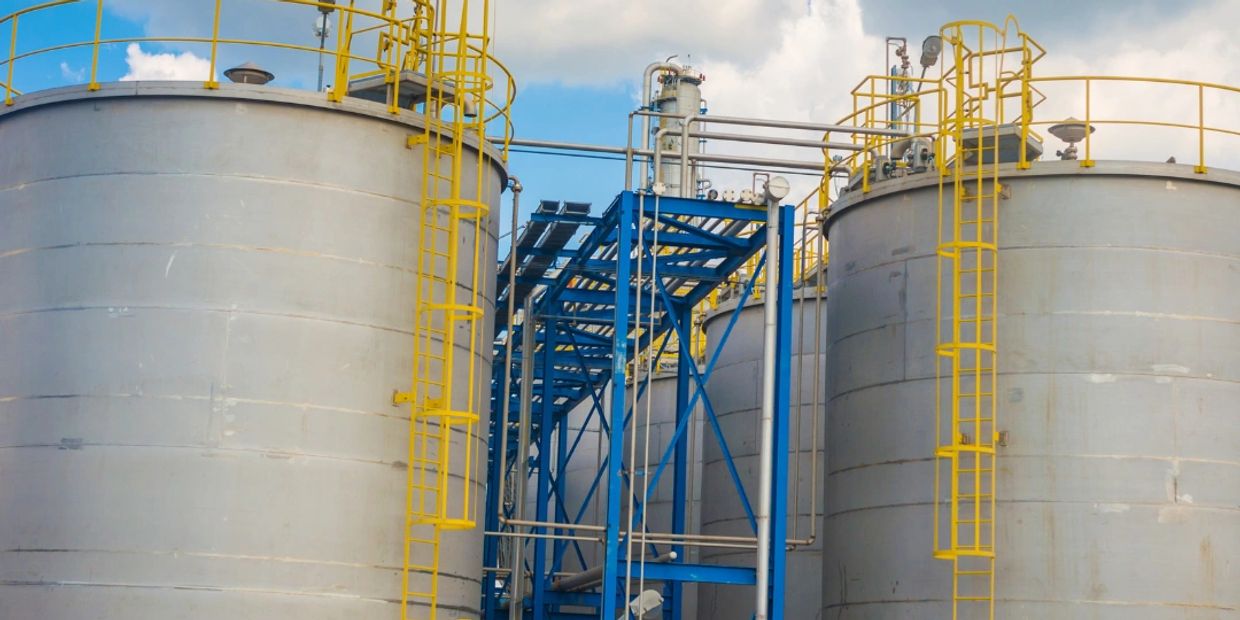A Thorough Introduction of Container Welding Assessment Standards and Methodologies for Improved Weld Quality and Efficiency
The significance of welding examination criteria in the production of containers can not be overstated, as they offer as the foundation for making certain weld integrity and operational integrity. Various assessment strategies, including aesthetic assessments and progressed non-destructive screening methods, are essential in determining prospective problems that might endanger performance.
Importance of Welding Examination Standards

Welding assessment criteria include an array of requirements, including product specifications, welding procedures, and qualifications of employees included in the welding procedure. By imposing these standards, organizations can systematically identify and fix potential flaws, thus lowering the probability of costly repair services or tragic failings. Rigorous evaluation methods cultivate a culture of accountability and accuracy, encouraging welders to keep high degrees of workmanship.

Common Welding Examination Strategies


Ultrasonic Checking (UT) is another common strategy, making use of high-frequency acoustic waves to identify inner flaws that may not show up externally. This technique is particularly effective for identifying voids or incorporations within the weld steel. Magnetic Particle Checking (MT) is additionally extensively utilized, particularly for ferromagnetic materials, as it reveals surface area and near-surface issues via the application of magnetic areas and ferrous bits.
Furthermore, Liquid Penetrant Screening (PT) identifies surface-breaking flaws by applying a penetrant to the weld and after that using a programmer to extract the penetrant. Each of these techniques adds to a detailed examination method, making certain that welds meet the rigorous quality criteria needed in tank building and construction.
Regulatory Criteria and Conformity
Governing criteria and compliance are necessary parts a fantastic read in ensuring the safety and dependability of bonded structures in container construction - Tank Welding Inspection. These standards serve to establish minimum demands for product residential or commercial properties, welding treatments, and assessment techniques, therefore lowering the threat of structural failures and improving general efficiency
Secret companies, such as the American Society of Mechanical Engineers (ASME) and the American Welding Society (AWS), give standards that are widely adopted in the industry. Conformity with these criteria not just makes sure adherence to finest visit this website practices but additionally fulfills lawful and contractual responsibilities, safeguarding the passions of stakeholders.
Governing bodies often mandate adherence to details codes, such as ASME Code Section IX for welding certifications and API 650 for bonded containers. These codes detail demands for welding methods, qualifications of workers, and testing approaches to confirm weld integrity.
Normal audits and evaluations are crucial to maintaining conformity, as they aid identify discrepancies from established requirements. Non-compliance can cause substantial charges, job delays, and safety and security hazards. Hence, a robust understanding of governing criteria and a commitment to compliance are vital in achieving high-grade and durable bonded tank frameworks.
Non-Destructive Evaluating Methods
How can the stability of bonded frameworks be ensured without creating damages? Non-destructive screening (NDT) methods provide a robust service, allowing assessors to review weld top quality without endangering the material - Tank Welding Inspection. Among the most common NDT methods are ultrasonic screening (UT), radiographic screening (RT), magnetic fragment screening (MT), and color penetrant screening (PT)
Radiographic testing involves passing X-rays or gamma rays with the weld, developing images that expose architectural flaws such as cracks or spaces. This method is important for analyzing the integrity of complex welds.
Magnetic bit screening is suited for ferromagnetic products, where magnetic areas expose surface and near-surface stoppages. Dye penetrant testing uses a fluid color to highlight surface-breaking defects, making it a reliable approach for non-porous materials.
Each of these NDT techniques has unique benefits, enabling extensive assessments tailored to details materials and welding processes. By applying these strategies, markets can ensure the reliability and safety of welded structures, eventually enhancing overall performance.
Enhancing Weld High Quality Through Assessment
Reliable examination plays an essential role in boosting weld high quality, serving as an important checkpoint in the fabrication process. By determining possible flaws early, evaluations reduce the risk of endangered architectural stability and make certain conformity description with sector standards. Using a combination of aesthetic evaluations, non-destructive screening (NDT) techniques, and mechanical evaluations, assessors can spot issues such as porosity, splits, and incomplete combination.
Implementing a robust examination method not only improves the total top quality of welds yet also fosters a culture of responsibility among welders and fabricators. Routine training and accreditation of examination personnel ensure that they are furnished with the essential abilities to identify and attend to potential troubles efficiently. This proactive strategy minimizes rework and linked costs, inevitably adding to forecast effectiveness.
Moreover, detailed documentation of inspection searchings for offers useful insights right into reoccuring problems, facilitating constant enhancement in welding practices. By leveraging innovative innovations, such as automated ultrasonic screening or digital radiography, weld top quality can be enhanced with much more exact assessments. To conclude, a strenuous inspection process is crucial in accomplishing high-quality welds, making sure safety and security, integrity, and long life in tank manufacture.
Conclusion
In final thought, the application of rigorous container welding evaluation standards and approaches is necessary for guaranteeing weld integrity and efficiency. By making use of a combination of aesthetic assessments, non-destructive screening approaches, and adherence to governing standards, organizations can properly recognize and mitigate prospective flaws. Cultivating a society of accountability amongst welders even more boosts the top quality of welding processes. Inevitably, these methods add to minimized structural failures, reduced repair costs, and improved functional performance within the market.